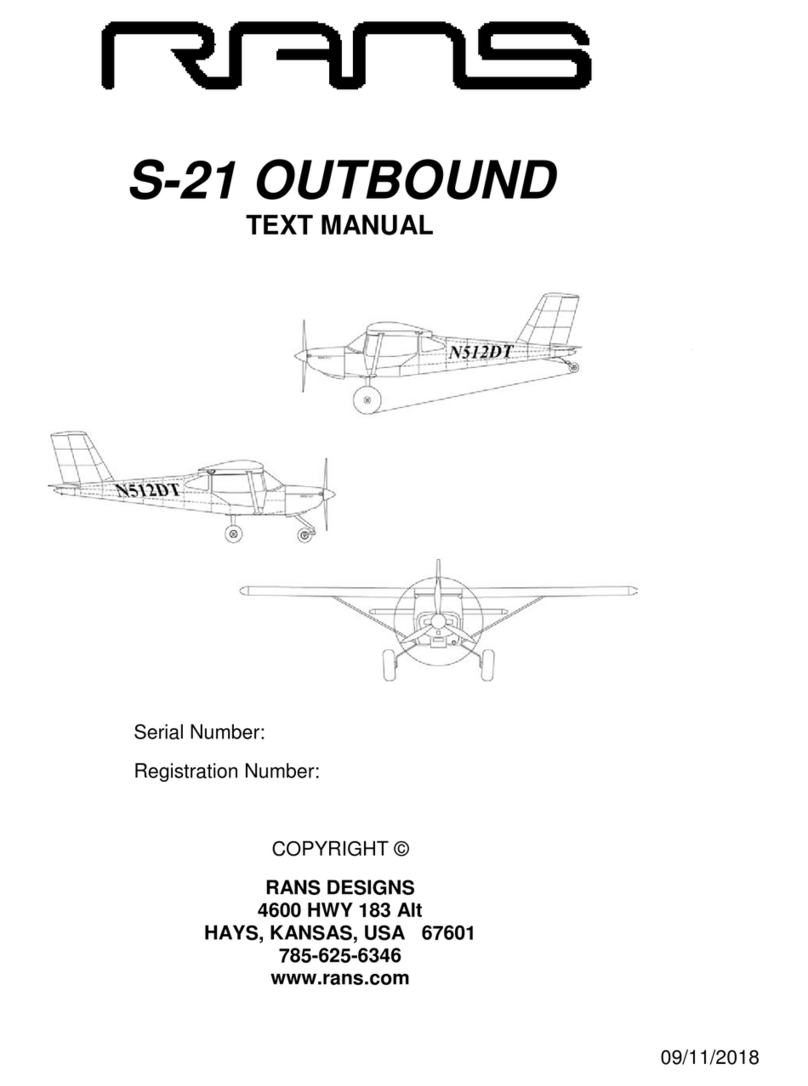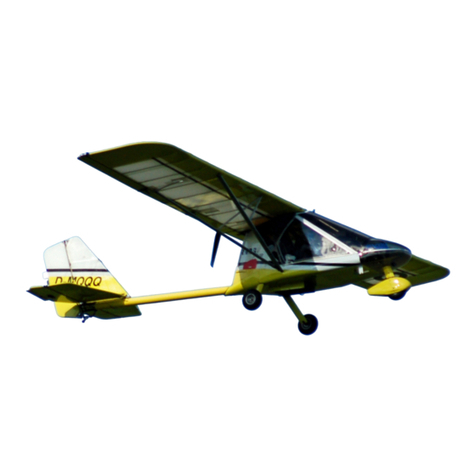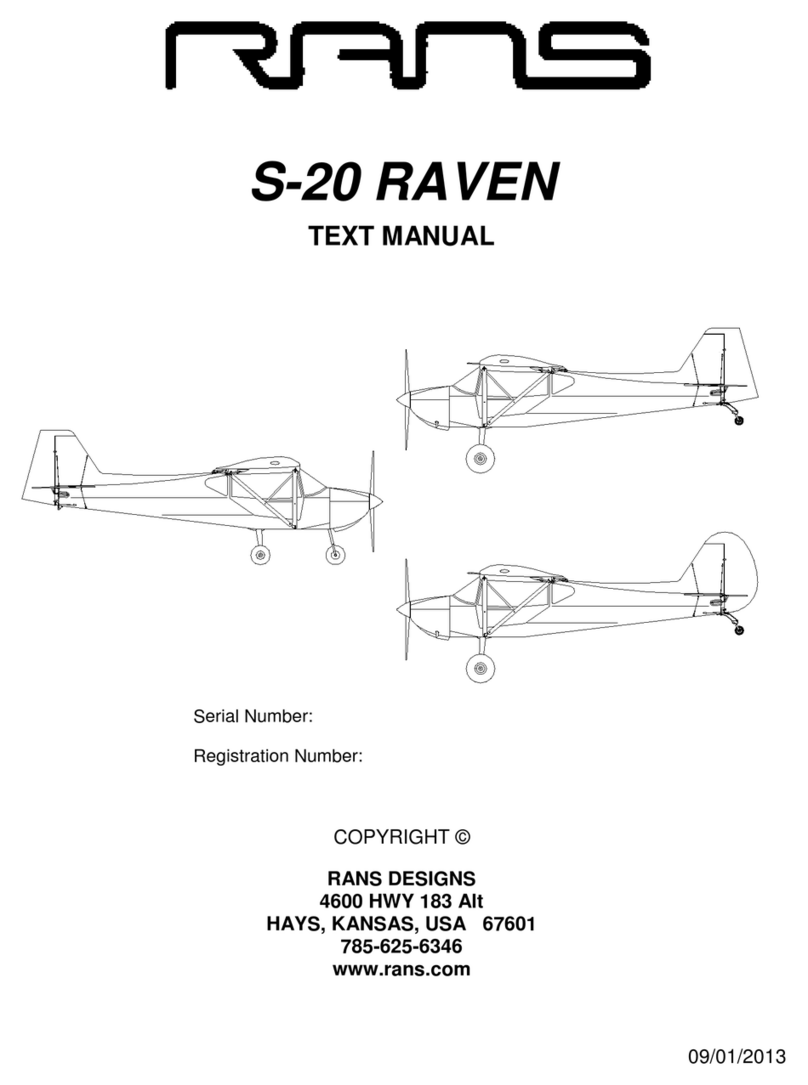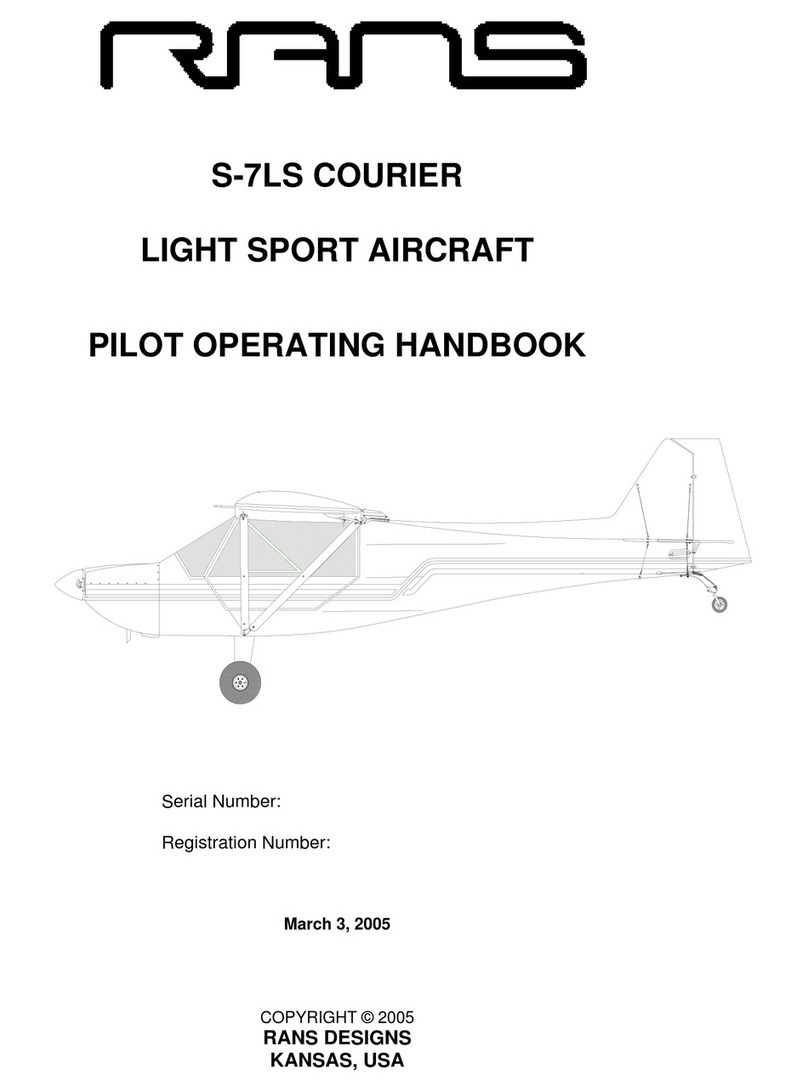
09/11/2018
RANS S-21 OUTBOUND TEXT MANUAL 14-8
3. To install the fuel fittings into the tank, obtain a piece of wire. Safety wire works
well. Insert wire through one of the fitting holes in the tank and up through the
filler neck. Refer to FIGURE 11-03D/915iS. Install an O-Ring onto the tank
withdrawal fitting and slide this assembly over the wire extending from the filler
neck. Bend a loop in the end of the wire to keep the fitting and O-Ring from
falling off. Pull the fitting through the hole. Slide a flat rubber washer, thick steel
washer, and a retaining nut over the wire and onto the fitting. Apply Loctite to
threads, install the nut on before removing the wire.
CAUTION: Do NOT get Loctite on the rubber washer.
4. Use an Allen wrench inserted into the tank fitting to hold the fitting while
tightening the retaining nut.
IMPORTANT: Do not allow the fitting or thick washer to rotate while
tightening or leaks may occur.
HINT: Prevent the thick washer from turning by holding with
needle-nose Vise-Grips.
5. Apply thread sealant to fittings and install into the tank fittings. Again, allow no
rotation of the tank fitting. Refer to the parts manual for the correct parts.
6. Perform a leak test by capping off all fittings and pressurizing the tank to 1 PSI
and let set for a period of time.
CAUTION: Damage may result from over-pressurization. While the
tank is pressurized, check for any leaks by spraying a soap/water
mixture onto the tank and around the fittings. To cap off the fittings
use a 1" segment of fuel line with a bolt inserted, and fuel line
clamps or similar. An alternate test is to fill the tank with water and
let it sit for approximately 48 hours.
7. Modify Header Tank Mount Channel per FIGURE 11-03E/915iS. Position Header
Tank flush with front of Mount. Use large hose clamps to secure tank to mount.
NOTE: Modified Mount Channel will position under hose clamps,
on top of tank, and be positioned so that Channel ends are flush
with sides of header tank.
LOCATING HEADER TANK SUMP VALVE HOLE THROUGH BELLY SKIN
8. Mark on the outside of the tank on each side next to the sump valve as per
FIGURE 11-03F/915iS. This allows location of the hole through belly skin with
the tank installed.
9. Set the header tank in place. Transfer the marks on the tank to the belly skin.
Remove the tank and project the marked lines at 90° to the sides of the tank until
they intersect.









































